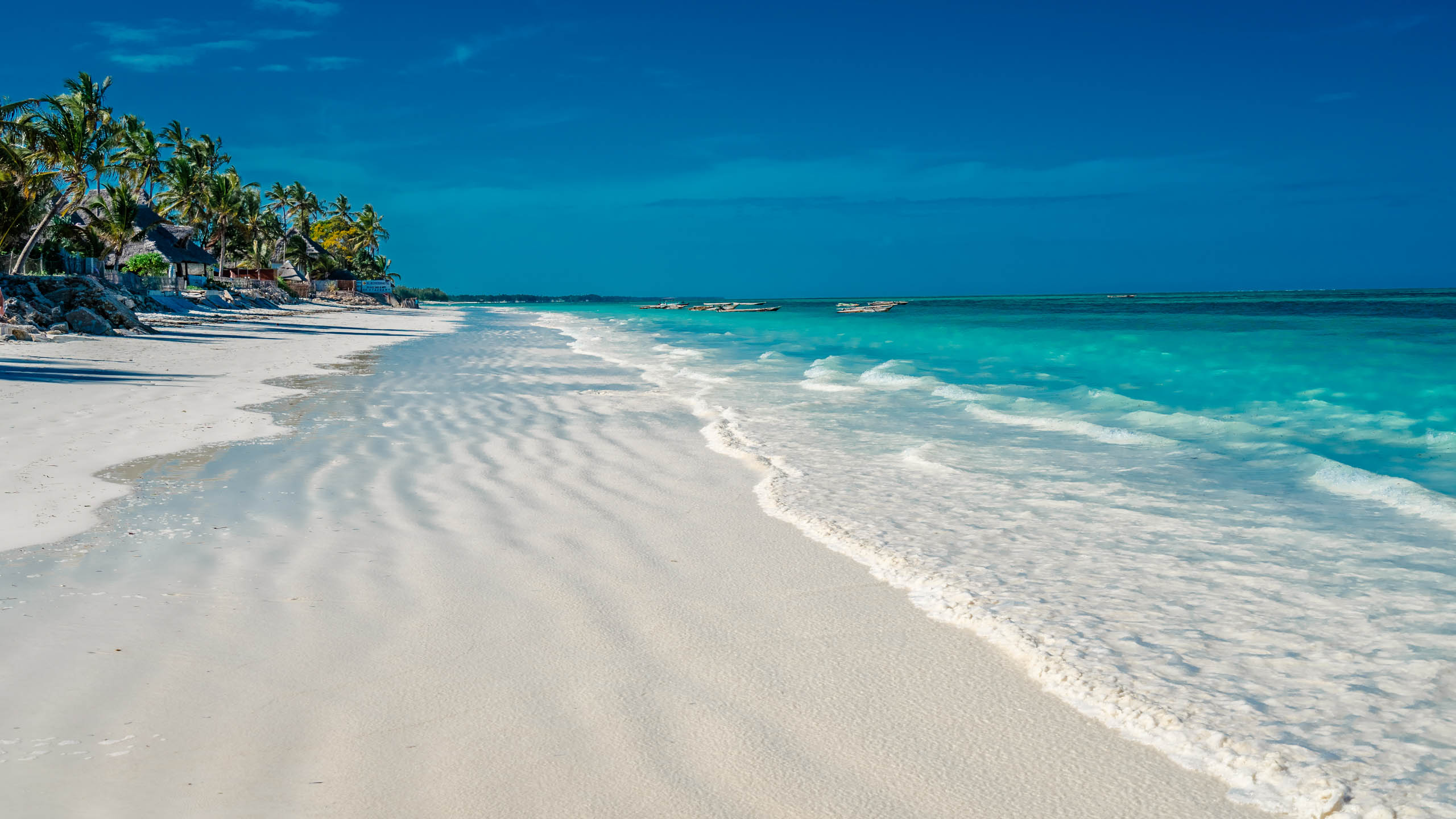Zanzibar Islands
Zanzibar, an archipelago off the coast of Tanzania, is one of the most iconic and exotic destinations in Africa. Famous for its pristine beaches, rich history, and spice plantations, Zanzibar offers a mix of cultural heritage, natural beauty, and laid-back island life. It’s a place where you can experience everything from historical exploration in Stone Town to relaxation on white-sand beaches.
Key Facts about Zanzibar Islands:
1. Location and Overview
- Zanzibar is a group of islands located in the Indian Ocean, about 25–50 kilometers (16–31 miles) off the mainland of Tanzania.
- The archipelago consists of two main islands:
- Unguja: The largest and most visited island, often just called Zanzibar.
- Pemba: The second-largest island, known for its lush landscapes, forests, and quieter atmosphere.
- Zanzibar also includes smaller islands like Mnemba Island (famous for its luxury resorts and marine life) and Chumbe Island (home to a marine sanctuary).
2. History and Cultural Heritage
- Zanzibar has a rich and diverse cultural heritage due to its history as a crossroads for trade between Africa, Arabia, India, and Europe.
- The Arab influence is particularly strong, and the island was once an important center for the Arab slave trade and the spice trade.
- Stone Town, Zanzibar’s historic capital, is a UNESCO World Heritage Site due to its Arab, Persian, Indian, and European influences. The town is a labyrinth of narrow streets, beautiful Swahili architecture, museums, and markets.
- Zanzibar was a major trading hub for spices (especially cloves, nutmeg, and cardamom) and later became an important point for the East African slave trade. The old slave market and the House of Wonders are among the notable historical sites.
3. Beaches and Natural Beauty
- Zanzibar’s coastline is renowned for its white sandy beaches, crystal-clear waters, and abundant marine life. Some of the most popular beaches include:
- Nungwi: Located on the northern tip of Unguja, Nungwi is famous for its beautiful beaches, vibrant nightlife, and proximity to dive spots.
- Kendwa: Just south of Nungwi, this beach is quieter and often regarded as one of the best for swimming and sunbathing.
- Paje: On the southeast coast of Unguja, Paje is known for its incredible kite surfing and tranquil beach environment.
- Jambiani: A charming village on the southeast coast, it has a laid-back vibe, perfect for those looking to relax and enjoy the beach.
- The coral reefs surrounding the islands make Zanzibar a top destination for diving and snorkeling. You can see vibrant marine life, including sea turtles, dolphins, and tropical fish.
4. Spice Tour
- Zanzibar is known as the “Spice Island,” and a spice tour is one of the must-do activities. You can visit spice plantations where you’ll learn about the various spices grown on the island, such as:
- Cloves, cardamom, nutmeg, vanilla, and turmeric.
- During the tour, you can also sample fresh spices, see how they’re harvested, and even buy some to take home.
5. Wildlife and Nature
- Jozani Forest: Located on the island of Unguja, this is Zanzibar’s main forest reserve and home to the red colobus monkeys, a species found only in Zanzibar. Jozani also offers a chance to explore lush mangrove forests and learn about the island’s diverse flora.
- Marine Life: The waters around Zanzibar are home to several marine protected areas like Mnemba Atoll. These areas are perfect for diving, where you can see coral reefs, dolphins, whale sharks, and sea turtles.
- Pemba Island: Known for its lush vegetation and pristine natural landscapes, Pemba is a great destination for eco-tourism and adventure lovers, offering hikes, wildlife, and more secluded beaches.
6. Activities and Things to Do
- Diving and Snorkeling: Zanzibar is renowned for its vibrant underwater world. Popular diving spots include Mnemba Island, Tumbatu Island, and Pemba Island. You can see colorful coral reefs, dolphins, whale sharks, and many species of fish.
- Kitesurfing: Zanzibar’s wind conditions make it an excellent destination for kite surfers, especially in areas like Paje and Kendwa.
- Fishing: The waters around Zanzibar offer great opportunities for sport fishing, including big-game fishing for marlin and tuna.
- Swim with Dolphins: Take a boat trip to Kizimkazi on the southern coast of Zanzibar, where you can swim with wild dolphins in their natural habitat.
- Cultural Tours: Discover the island’s rich history through visits to Stone Town, the former slave market, the House of Wonders, and the Sultan’s Palace.
7. Cuisine
- Zanzibar’s culinary scene is an amazing mix of Swahili, Indian, Arab, and European influences. It’s renowned for its use of fresh ingredients like fish, coconut, spices, and tropical fruits.
- Must-try dishes include:
- Zanzibar Pizza: A unique street food made with a thin dough filled with a mixture of meat, vegetables, and sometimes egg.
- Urojo (Zanzibar soup): A tangy, spicy soup often served with meats, potatoes, and a variety of toppings.
- Pilau rice: Flavored rice, often with meat or vegetables, seasoned with spices like cinnamon, cardamom, and cumin.
- Spiced tea: Often served with ginger and cloves.
8. Best Time to Visit
- The best time to visit Zanzibar is during the dry season (from June to October), when the weather is sunny, and there is little to no rain. This is ideal for enjoying the beaches, outdoor activities, and exploring.
- The short rains come between November and December, while the long rains fall from March to May. These months are less popular due to unpredictable weather, but it can still be a good time to visit for fewer crowds and lower prices.
9. Getting There
- By Air: Zanzibar has an international airport (Zanzibar International Airport – ZNZ) with flights from various cities in Tanzania and international destinations.
- By Ferry: Ferries run regularly from Dar es Salaam to Zanzibar, a scenic boat ride that takes about 2 hours.
- By Boat: Private boats and yachts are available for charters and cruising around the islands.
10. Zanzibar’s Unique Culture
- The island’s culture is a beautiful fusion of Swahili, Arab, Indian, and European influences. This is evident in its architecture, art, and music, as well as in the local dialects.
- The island is predominantly Muslim, and its religious festivals such as Eid are an important part of life. However, you’ll also find vibrant celebrations of Swahili culture, especially in Stone Town.
Why Visit Zanzibar?
Zanzibar is an enchanting place that offers a mix of relaxation and adventure. Whether you’re exploring the historical sites of Stone Town, relaxing on the pristine beaches, diving into the clear waters of the Indian Ocean, or experiencing the island’s spices, there’s something for everyone.
Zanzibar is a paradise for those looking for an exotic escape—whether you’re seeking adventure, history, or just pure beach relaxation, it delivers on all fronts.

